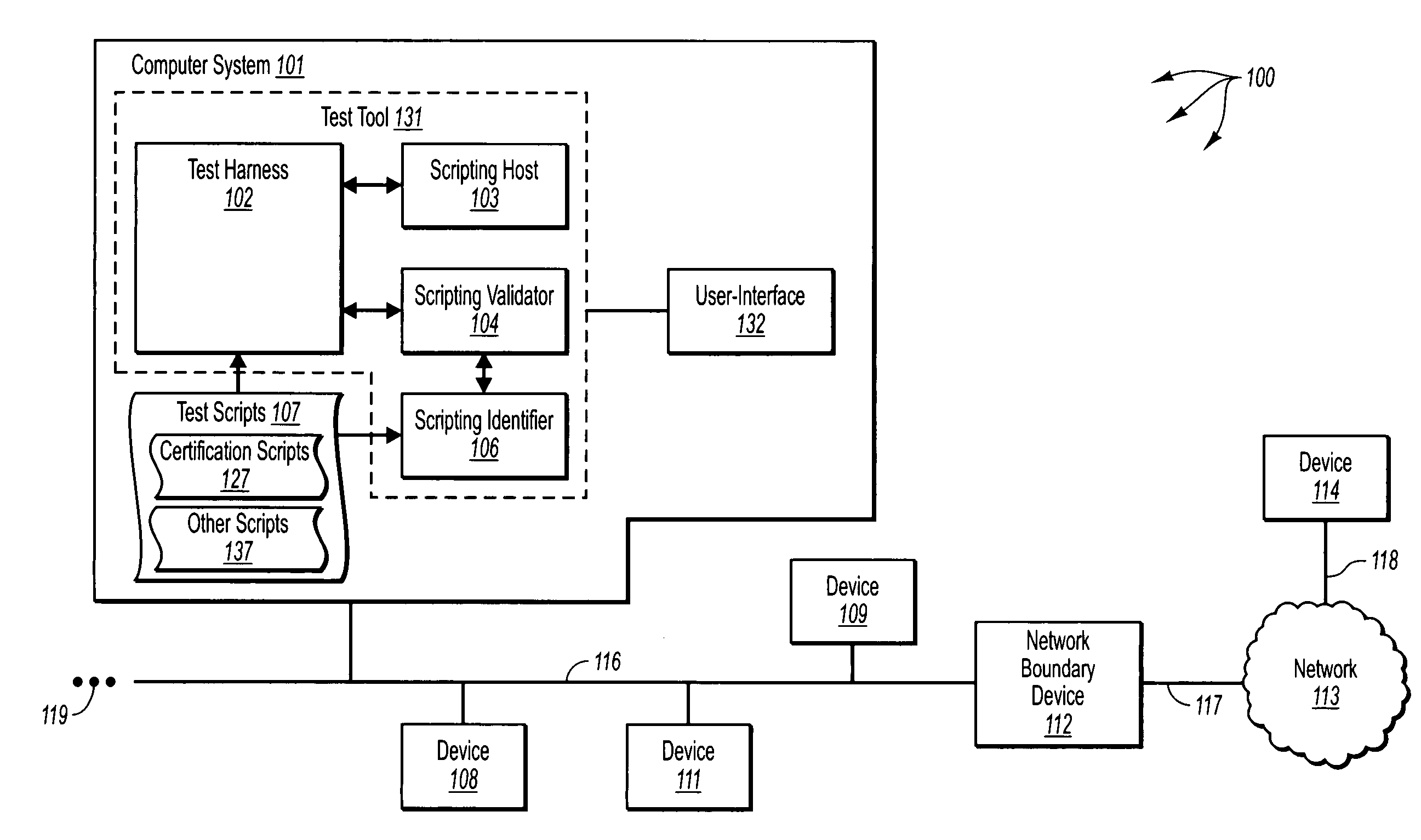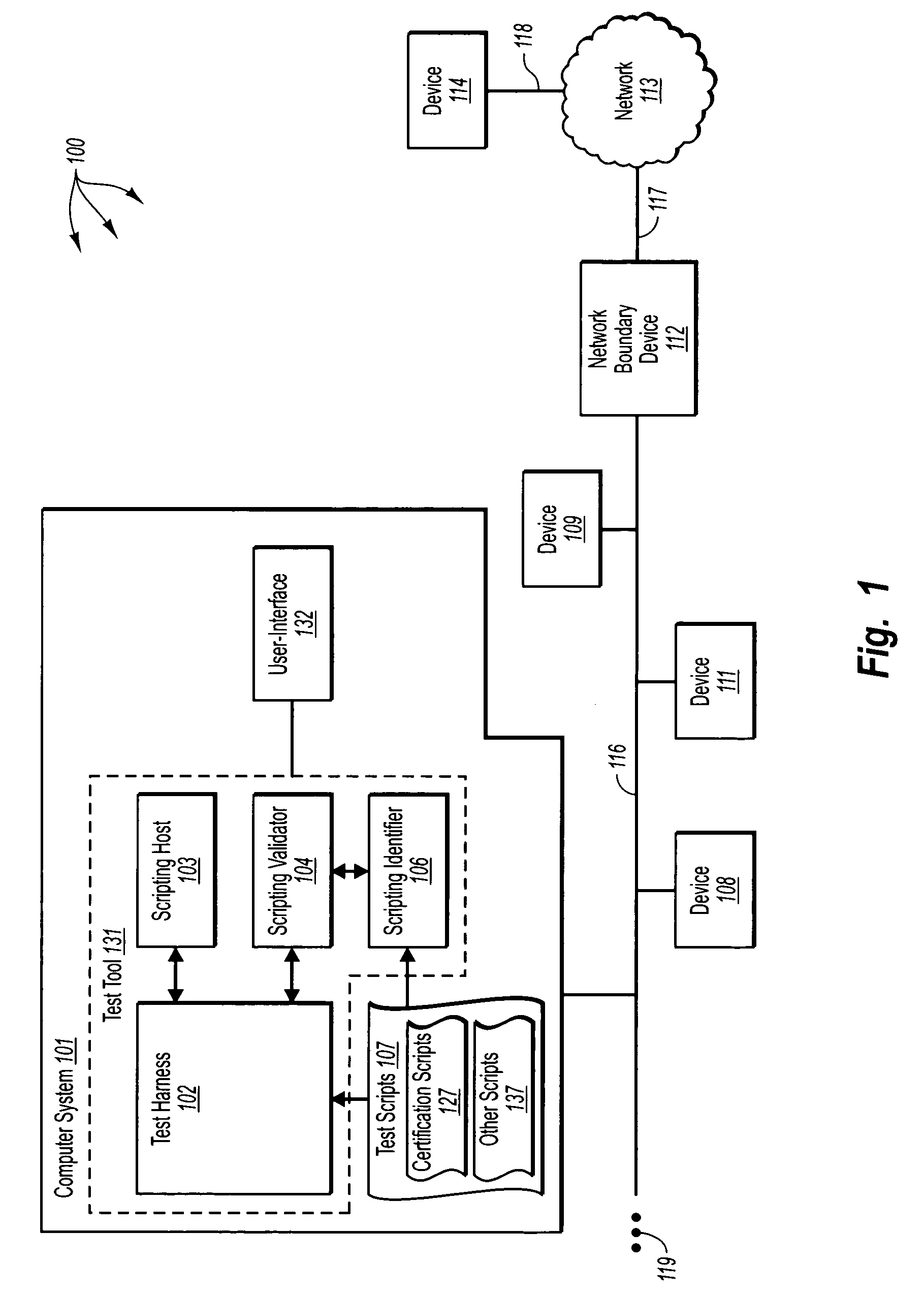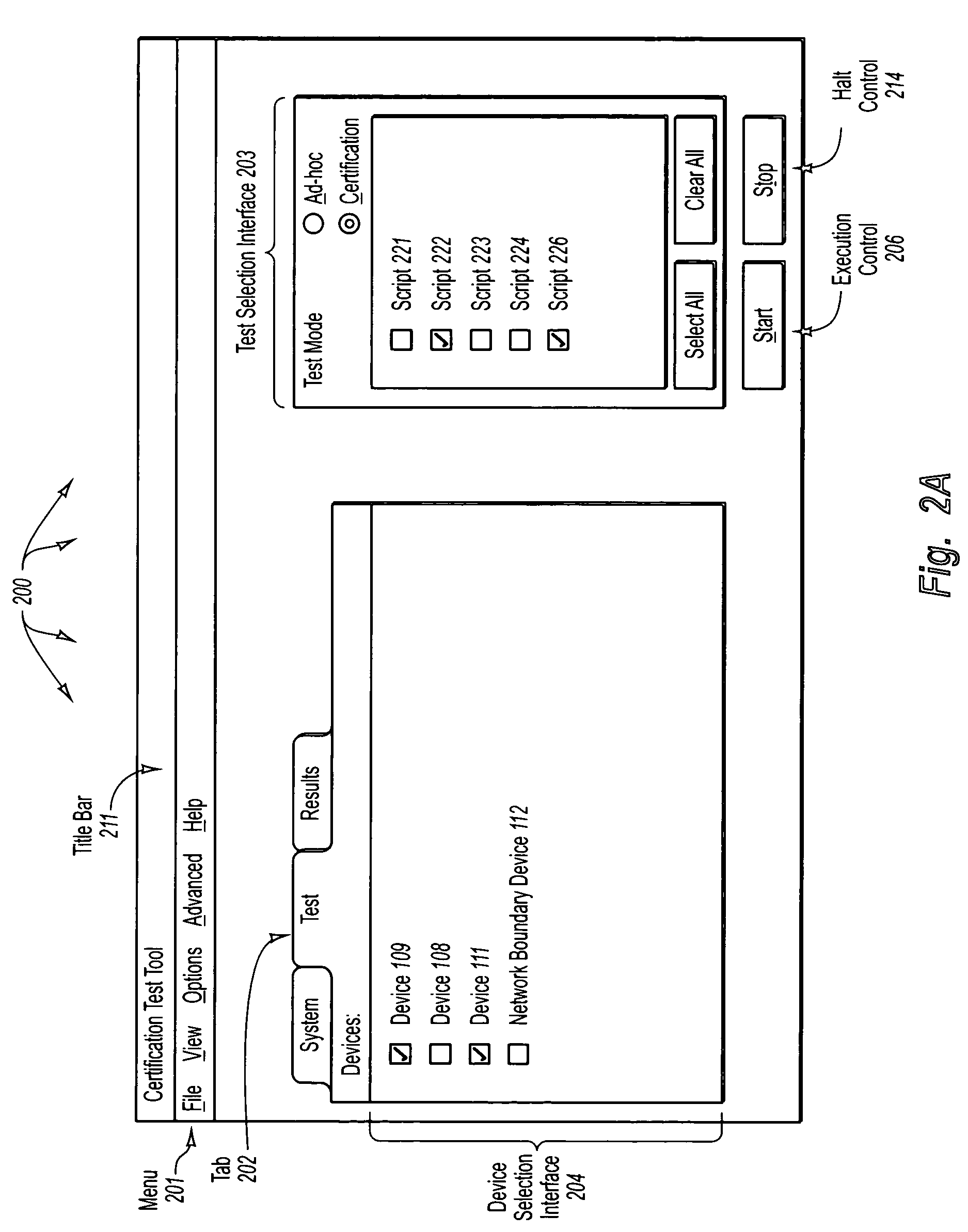Enhanced testing for compliance with universal plug and play protocols
a plug and play protocol and testing technology, applied in the field of computer systems and computer related devices, can solve the problems of inability of computer systems to cause peripheral devices to perform any actions, difficulty in determining the appropriate device driver, and inability to have an appropriate device driver, etc., to facilitate the storage of variable data returned and enhanced testing
- Summary
- Abstract
- Description
- Claims
- Application Information
AI Technical Summary
Benefits of technology
Problems solved by technology
Method used
Image
Examples
Embodiment Construction
[0030]The present invention extends to methods, systems, and computer program product for enhanced Universal Plug and Play (“UPnP™”) compliance testing. A control point (e.g., a computer system) and one or more devices (e.g., printers, wireless gateways, etc.) are network connectable (or are connected) to a common network. The control point includes a test tool that can execute scripts to simulate UPnP™ functionality. Using scripts allows more flexible and programmatic UPnP™ compliance testing. Multiple devices can be selected for testing thereby reducing the burden associated with individually testing devices on an isolated network. Test logs can be secured using digital signatures to reduce the likelihood of test logs being intentionally or inadvertently altered prior to being received at a certification authority.
[0031]The embodiments of the present invention may comprise a special purpose or general-purpose computer including various computer hardware and software, as discussed ...
PUM
 Login to View More
Login to View More Abstract
Description
Claims
Application Information
 Login to View More
Login to View More - R&D
- Intellectual Property
- Life Sciences
- Materials
- Tech Scout
- Unparalleled Data Quality
- Higher Quality Content
- 60% Fewer Hallucinations
Browse by: Latest US Patents, China's latest patents, Technical Efficacy Thesaurus, Application Domain, Technology Topic, Popular Technical Reports.
© 2025 PatSnap. All rights reserved.Legal|Privacy policy|Modern Slavery Act Transparency Statement|Sitemap|About US| Contact US: help@patsnap.com



